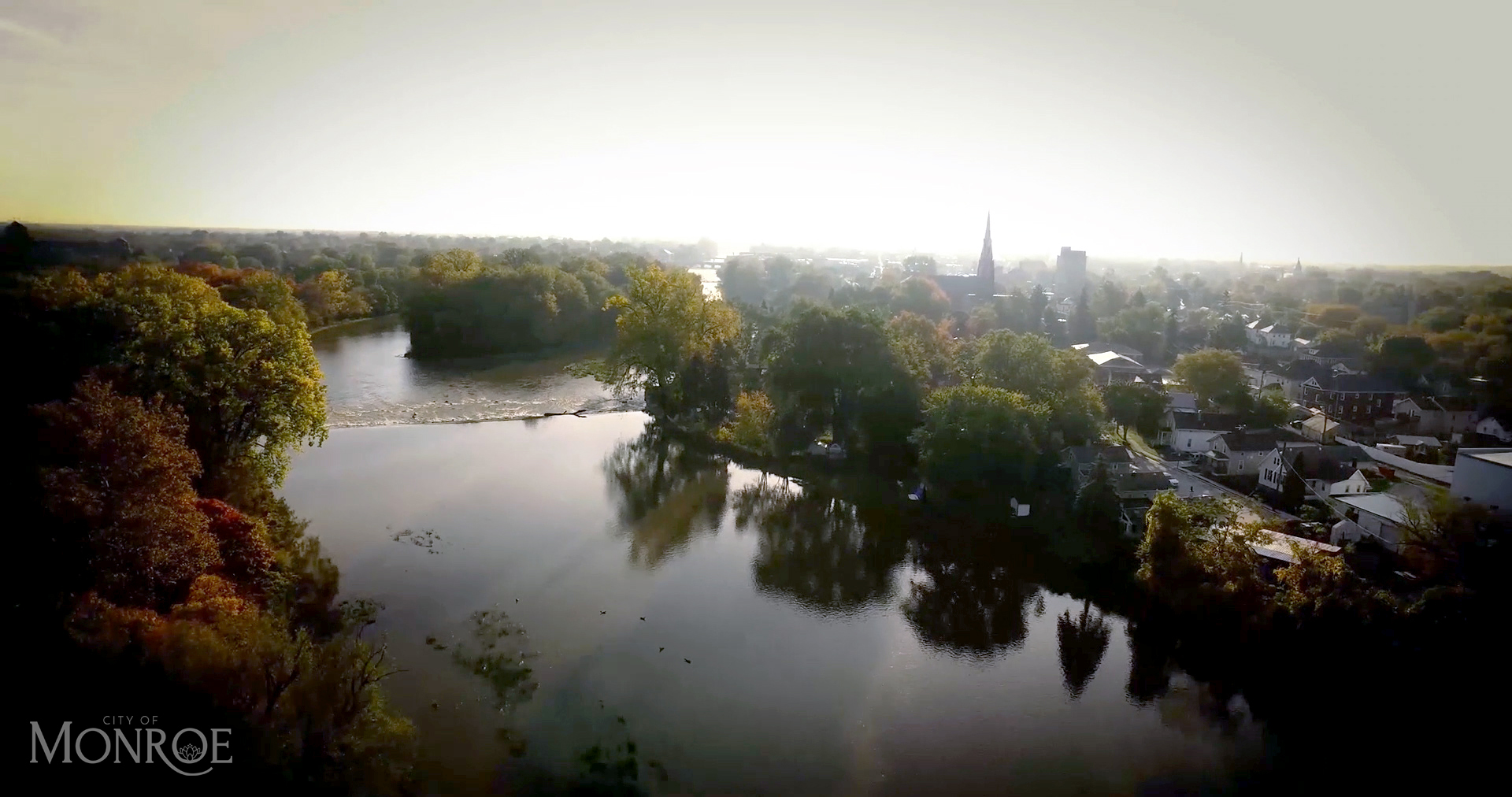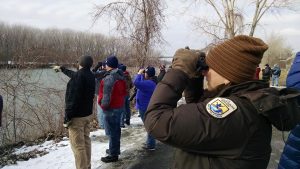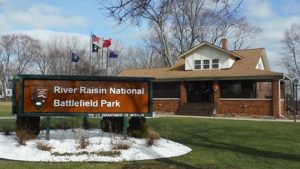
Cleanup of River Raisin Helps Revitalize Michigan Community
Monroe, Michigan leverages its water resources
Like many North American cities, Monroe, Michigan has lost key industries and jobs, but also has unique assets that can be leveraged for revitalization. Among these assets are outstanding natural resources, historical assets, and exceptional outdoor recreation right in its backyard. Monroe’s master plan, titled Resilient Monroe, guides the future growth and development of the city in a fashion that supports resilience – the capacity of a community to withstand and recover from a shock or serious misfortune without permanent disruption. The city’s goal is to develop into a vibrant urban center that preserves its history, while welcoming new development.
Key elements of this plan are leveraging the city’s history and water resources. Monroe has nine properties listed on the National Register of Historic Places, including three historic districts and six historic sites. Monroe also has significant water resources, including River Raisin, its 1,072-square-mile watershed, and Lake Erie. The River Raisin flows directly through Monroe and empties into Lake Erie.
The cleanup of the river has been an essential and integral part of this revitalization. Designated a Great Lakes Area of Concern in 1985, mainly due to contaminated sediments and health advisories on fish consumption, the river has since been the target of restoration efforts under the River Raisin Remedial Action Plan (RAP).

Contaminated sediment remediation in the lower River Raisin, Photo by USEPA
All cleanup and restoration work called for in the RAP has been completed. Efforts include significant upgrades to the Monroe Metropolitan Wastewater Treatment Plant ($45 million), contaminated sediment remediation ($43.1 million), and habitat restoration and dam removal ($7 million) to open the river to an additional 23 miles for Great Lakes fish migration and spawning. More than $43 million in Great Lakes Restoration Initiative funding alone has been provided to accelerate remediation and restoration. Today, bald eagles have returned to the watershed, and both new and long-absent fish species can be found in the river.
Like many other North American cities, for years Monroe turned its back on the river. More recently, the city has been developing trails like the River Raisin Heritage Trail to help improve public access to the waterfront and to strategically link community, business, historical, and recreational assets.

Eagle tours sponsored by DTE Energy and Detroit River International Wildlife Refuge at the mouth of the River Raisin, Photo by USFWS
Resilient Monroe has championed improved recreational access to the River Raisin in the downtown area with people clearly enjoying riverfront gathering places with views of the river. To increase recreational opportunities along the river, the Downtown Development Authority is looking into ways to extend, increase use, and improve safety and aesthetics of the downtown Riverwalk. According to the latest Parks Master Plan completed in 2017, the city is also planning to invest more than $3.5 million in two of its riverside parks within the next 10 years – St. Mary’s Park in downtown Monroe and Mill Race Park on the city’s west side. Plans include the installation of nature paths, boardwalks, and a kayak and canoe launch.
The city also reports an increase in small business owners and developers inquiring about property for residential, dining, and retail development opportunities along the riverfront. This year a new restaurant is opening with an outdoor dining patio overlooking the river. Another dining establishment is relocating one block north to be closer to the river, again with an outdoor patio overlooking the river. Further, existing building owners have made riverfront improvements to their buildings to help strengthen connections to the river and help create a riverfront sense of place.
As part of its revitalization efforts, Monroe championed the establishment of the River Raisin National Battlefield Park in 2009. The city and Monroe County Historical Society developed a Heritage Master Plan to complement and reinforce Resilient Monroe as part of an effort to reinvent and revitalize Monroe. Both Resilient Monroe and the Heritage Master Plan view the cleanup and restoration of the River Raisin as an integral part of a vibrant community with a sustainable economy.

River Raisin National Battlefield Park, Photo by nps.gov
River Raisin National Battlefield Park is truly unique in that it is the only national park that is adjacent to an international wildlife refuge (i.e., Detroit River International Wildlife Refuge) and a state park (i.e., Sterling State Park). Annual attendance at the battlefield park has steadily increased from 36,206 people in 2011 to 238,813 in 2017. In total, 75.5% of the 2016 visitors were from outside of Monroe County, including 49 states (all but North Dakota) and 20 foreign nations.
Economic benefits of River Raisin National Battlefield Park, based on a 2017 National Park Service model, have been estimated at $16.4 million in 2016. Michigan State University, in partnership with the National Battlefield Park, projected that annual attendance will eventually reach approximately 635,000. At this visitation rate, state and local economic impacts are projected at $31.6 million and $21.9 million, respectively.
In August 2018, the National Battlefield Park announced a $100-million redevelopment to turn this historical site into a tourist attraction. The redevelopment was kicked off with the purchase of 20 houses that will be demolished to make room for re-creation of historic Frenchtown and a $20-million educational center.

Restored fish habitat in the lower River Raisin, Photo by Melanie Foose
Clearly, this integrated approach to protecting the environment, celebrating history, enhancing the community, and furthering the economy is helping redefine Monroe from a Rust Belt city with a polluted river to a desirable urban community with outstanding natural resources, significant historical assets, a national park, an international wildlife refuge, a state park, and a growing, diverse Monroe economy. The cleanup of the River Raisin was an integral and essential part of this revitalization strategy. Federal funding through the Great Lakes Restoration Initiative played a critical role in accelerating implementation of remedial actions to restore the River Raisin. Sustaining Great Lakes Restoration Initiative funding will be essential to cleaning up the remaining 27 Areas of Concern in the U.S. portion of the Great Lakes.
For more information on economic benefits of cleaning up Great Lakes Areas of Concern, visit: ![]() .
.
Featured Image: River Raisin as it flows through Monroe, Michigan, Photo by City of Monroe





